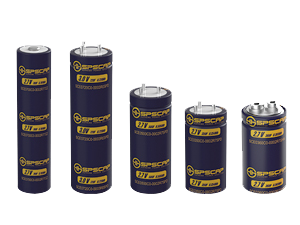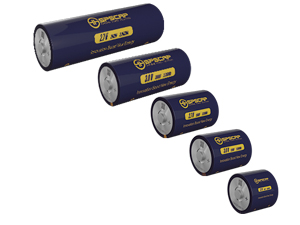SPSCAP®EDLC ultracapacitors using ACP activated carbon coating/dry-method electrode and organic electrolyte system, characterized by high capacity, low resistance, low leakage, and high reliability. The super capacitors combine the features of the normal capacitor in rapid charging and discharging ability and the energy storage ability of battery, so SPSCAP® super caps bridge the gap between electrolytic capacitors and rechargeable batteries. According to different capacity and appearance, three series supercaps such as SCE, SCP are available.
TEL : +86-755-89486800
E-mail: info@spscap.com



